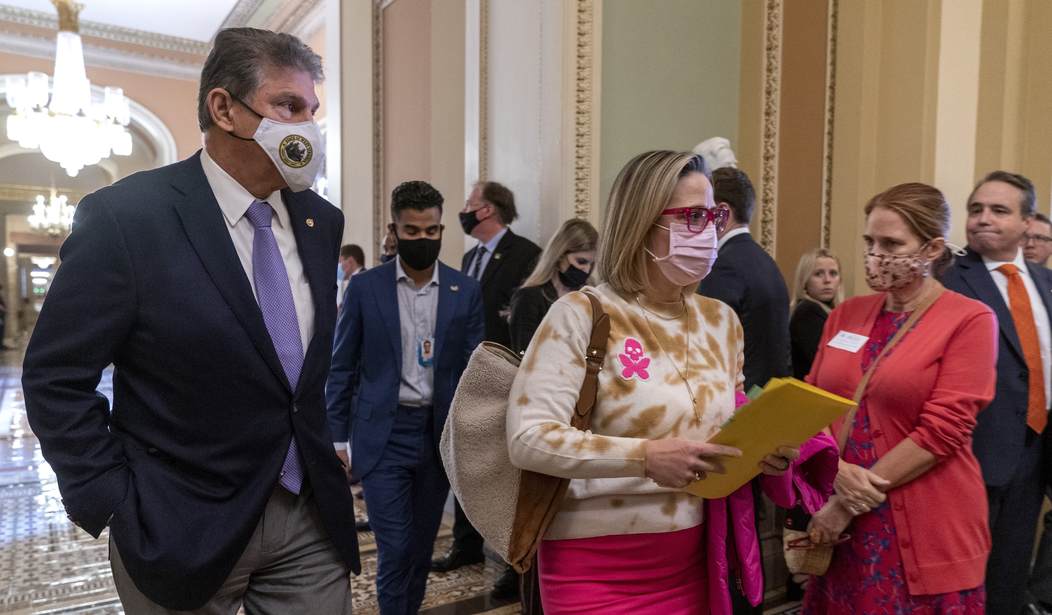The Democrats managed to hang on to the Senate in 2022 for a variety of reasons but it wouldn’t have been remotely possible without a favorable map.
With Republicans defending 23 seats and Democrats only 12, the chance for a Republican takeover of the Senate hinged on all the tumblers falling into place. Just prior to Election Day, it appeared that most of the GOP’s dreams were coming true.
But the map is relentless. In states carried by Joe Biden in 2020, Republican Senate candidates came close but failed. Nevada, Pennsylvania, and Georgia all voted for the Democrats in the end, leaving the Republicans on the outside looking in.
But Democrats should temper their 2022 celebrations with the realization that 2024 could make them a minority party in the Senate for a decade or more. Of the 34 Senate seats up for re-election in 2024, 24 of them are currently held by Democrats.
And much worse for Democrats, three of those seats — Montana, West Virginia, and Ohio — are in states carried by Donald Trump in 2020 by 16, 39, and 8 points, respectively. An “uphill climb” would be an understatement.
There are also two races where Republicans could do very well with the right candidate: Arizona against Senator Kyrsten Sinema and Nevada against Senator Jacky Rosen.
Plus, the Democrats’ “midwestern firewall” barely survived, with GOP Senator Ron Johnson winning in Wisconsin and Mehmet Oz barely losing in Pennsylvania. Decent candidates up and down the list could give the GOP a massive majority in the Senate in 2024.
Each of the most vulnerable Democrats — Jon Tester in Montana, Joe Manchin in West Virginia, and Sherrod Brown in Ohio — ran in 2012 and 2018. The landslide won by Obama in 2012, and the very favorable 2018 map gave those candidates an easier time than they probably should have gotten.
There is no guarantee the 2024 environment will be as friendly, and each of these states has trended to the right in recent presidential elections — Ohio and West Virginia, especially. West Virginia was Donald Trump’s second-best state in both 2016 and 2020, and Rep. Alex Mooney (R-W.Va.) has already announced a run. Manchin hasn’t announced his plans, but if he doesn’t run this is a very likely pickup for the GOP.
Also in mortal danger are Sinema and Rosen. Sinema has so angered Democrats in her state due to her votes against Biden’s spendapalooza that she will definitely be primaried and may not even make the general election. And Rosen has failed to make much of a mark in six years and could be had by a decent GOP candidate.
One of the great unknowns in 2024 will be retirements. So far, Indiana’s Republican Senator Mike Braun is the only announced retirement. He plans to run for governor. But there are always those senators who look at the map and realize they will probably be in the minority after the 2024 election or just can’t take it anymore and refuse to run.
This is especially true when you consider that, despite Democrats crowing about the public embracing their agenda, they ought to take another look at where they are.
Democrats lost the U.S. House and barely won the Senate, despite running a large swath of moderate, pro-democracy candidates against a shockingly large swath of extraordinarily conservative, “Big-Lie”-endorsing candidates. In 2024, based on GovTrack’s ideological ratings, Democrats’ seven most vulnerable incumbents include five of their 16 most conservative members.
So, Democrats must sober up.
And if Biden declines or is unable to run, a presidential candidate like Kamala Harris or some younger version of Bernie Sanders (AOC?) at the top of the ticket would make the GOP’s job that much easier.










